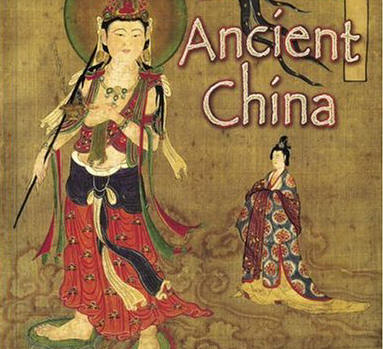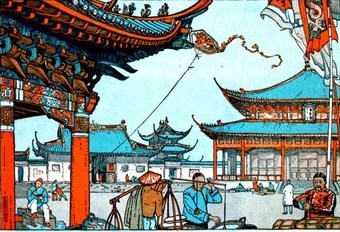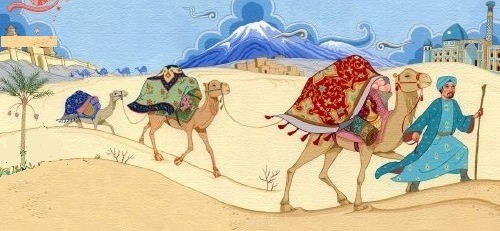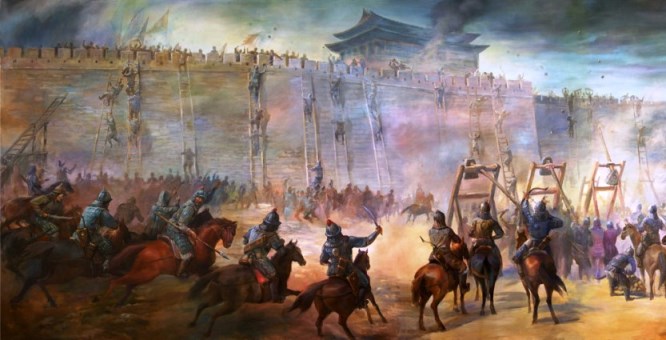
 |
|||
 |
|||
| 1. On a new page in your book write out the above 7 Inquiry questions
under the heading Ancient China. - Don't answer the above 7 questions at this stage, they are just for you to think about the issues we will be looking at in this unit on Ancient China. |
|||
| 2. a) Play the geography challenge:
http://www.ancientchina.co.uk/geography/challenge/cha_set.html b) Describe in your book the different types of landscapes found in China. c) Watch and pause this video to record some of the key points about the Geography of China: https://www.youtube.com/watch?v=J6IrkUvJxio&index=1&list=PL9bDHRx3YbkVwzLUTK2aiT460v9fZImZp (To help open the links, right mouse click and select 'open in new window' or copy and paste the web address into your browser.) |
|||
|
3. a) List the different geographical
features of China that are discussed in the following website. b) Explain how the geographical features shaped the development of their civilisation and culture: http://www.ducksters.com/history/china/geography_of_ancient_china.php Remember to use the main or key words from the question when you start your answer.... and remember to use T.E.E.L. (See question 8. c) |
|||
| 4. Read the brief overview of the history of China in the links
below, and then complete this close passage activity: - http://www.ancientchina.co.uk/time/home_set.html - This site contains a simple interactive timeline and overview of the different dynasties. |
|||
| 5. Google image search 'blank map of China' - Print the map off and
then neatly label the map with the key Geographical features and also the main cities that became important throughout ancient China's history. - Lightly colour the map and paste it in your book. - Google image search 'Maps of China'. You will find useful maps like these. |
|||
| 6. a) Watch any movie
clip (youtube) that looks at the
cultural and economic significance of the silk road. b) Record 5-8 key points as you watch the movie: (Additional movie clip: http://www.pinterest.com/pin/169307267216418991/ )  c) Print off this Map of Asia and Eastern Europe. Draw in the Silk Road on your map. Get the information you need from this map and then paste your map in your book. d) Also click the statue of the camel in this interactive staffroom and explain in your book why camels were so important for trade and the merchants along the Silk Road. e) Click the Import and Export signs on each side of the camel. List in your book the main goods imported into China and their chief exports. |
|||
b) Use a full new page to draw the completed diagram in your book. Use the heading :- The Hierarchy of the Ancient Chinese Feudal Society. c) See how many details you can add to your diagram from this page below(or your own research): http://www.hierarchystructure.com/chinese-social-hierarchy/ (The more, the better!) |
|||
| 7. Print off
this Glossary and paste it in your book. Write each of the terms from the word-bank next to the correct definition. Cross off each of the terms as you write them in the Glossary. |
|||
| 8. a) Read this page on Law and Order under The Qin Dynasty b) Also read pages 2-4 in the virtual book on the Qin Dynasty from the bookshelf in this interactive staffroom. |
|||
| c) According to the information in the above sources, which
government had the fairest and most lenient system of law and order; the
earlier rulers who based their laws on the teachings of Confucius or the
the Qin Emperor who based his legal system on the ideas called Legalism? Remember T.E.E.L. Use the main or key Topic words from the question when you start your answer.... Use one or two quotes from the sources as Evidence to support your answer; And finish with a 'Therefore...' sentence or a sentence that Links back to the question using the main or key words in the question. d) Watch and pause this video to record some of the key points about the Qin and Han Dynasty. https://www.youtube.com/watch?v=KkNEvPly5WU&index=4&list=PL9bDHRx3YbkVwzLUTK2aiT460v9fZImZp Optional extra video: http://www.neok12.com/video/History-of-China/zX034a50076157674c5f790a.htm e) Read pages 2-3 in the virtual book on the Han Dynasty from the bookshelf in this interactive staffroom. What changes to the system of government used across the land were introduced during the Han Dynasty. How were these different to the earlier methods used during the Qin Dynasty? |
|||
| 9. a) Explore this ancient Chinese tomb: http://www.ancientchina.co.uk/tombs/explore/exp_set.html |
|||
| b) Read this short passage about
tombs and ancestors in Ancient China: http://www.ancientchina.co.uk/tombs/homemain.html |
|||
| c) Also explore the green interactive model of a tomb in this interactive staffroom. | |||
| d) List the key features of Ancient Chinese Tombs. e) How were Ancient Chinese Tombs different to Ancient Egyptian tombs? |
|||
| 10. Complete the Ancient Chinese Tomb Challenge. | |||
| 11. Design a Prezi on the topic Religion in Ancient China. Sign up for a free public Prezi account. First click and read the wall poster in the interactive staffroom. The site below and the search words might be a good start for information: http://www.ducksters.com/history/china/religion.php Chinese Religion
|
|||
| 12. a) Explore this ancient Chinese workshop. | |||
| b) Briefly record the key points about the Crafts and Artisans of
Ancient China: http://www.ancientchina.co.uk/crafts/home_set.html |
|||
| 13. In this
interactive staffroom find the book on who's who in Ancient China. Read the brief accounts of the most famous individuals. Select which one you think is the most interesting or important and record in your book point form notes about the details of his life. Include an illustration. |
|||
| 14. On a new page, write a short magazine article about
Ancestor Worship in Ancient China. First look at some magazine articles to get some ideas about the writing styles and features they contain. Make the page look interesting and include an illustration. (The above site mentions 'reciprocity'. This means, 'if you help me, I'll help you.' So if a person looks after his dead ancestor's grave, then his ancestor's ghost will reciprocate, return the favour, and get the Gods to bring that person good luck or fortune in life.) |
|||
| 15. Use some of the following search words and link to design a mind-map about daily
life in ancient China. Use a mind-map making application such as https://bubbl.us/ Or draw and colour a freehand mind-map. Print your completed mind-map off and paste it in your book.
http://www.ducksters.com/history/china/daily_life.php |
|||
Ancient:
Chinese Food |
|
the Great Wall of China. Record some of the key facts about the Great Wall.
b) Watch this short video on the Great Wall of China.
Watch the video a second time and pause the video to record some more key facts about the Great Wall:
http://www.history.com/topics/great-wall-of-china
Complete the picture ordering activity for each type of produce. Then in your book,
write 3 points about each of these different types of Chinese produce.
Look in the cabinet in this interactive staffroom. Then record 2 or 3 key points about each of the following:
Ancient Chinese - Weapons, Infantry, Archers and Cavalry.

20. Watch this Video about the Mongols and read the following webpage:The Mongolian Empire
a) Who was Genghis Khan and how and when did he create the Mongolian Empire?
b) What countries did the Mongolians attack and what fighting weapons and methods did they use to attack armies and cities?
c) When and against which countries did the Mongolians eventually suffer defeat?
Remember to use the main or key words in the question when you start your answer....
and remember to use T.E.E.L. (See question 8. c)
When you have completed your set tasks from the above activities, you
can explore this adventure game
while waiting for the rest of your class to finish the set tasks:Yong's
China Quest adventure game.